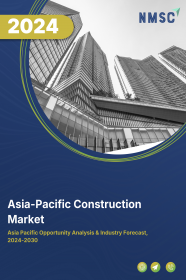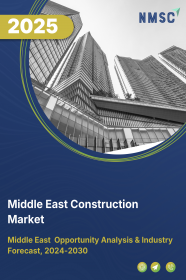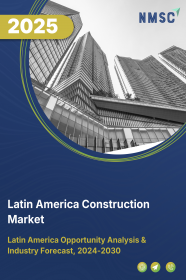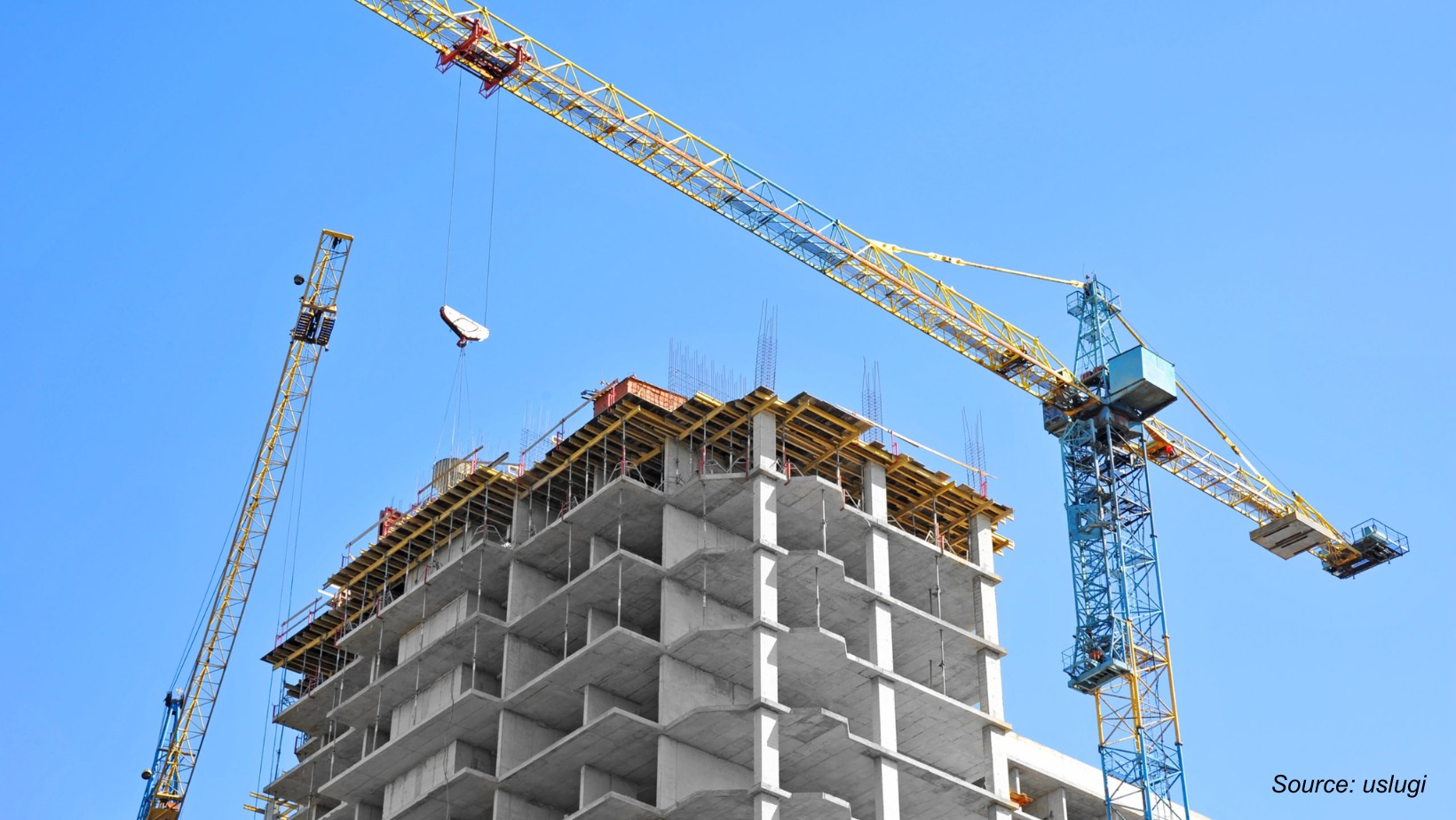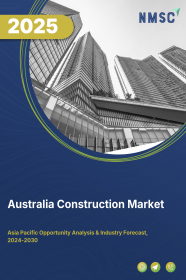
Australia Construction Market by Type (Renovation, and New Construction), by Sector (Real Estate, Infrastructure, Industrial), by Construction Method, Traditional Construction, Prefabricated/Modular Construction, 3D Printed Construction, Green/Sustainable Construction), by Type of Contractor (Small Contractor, Medium Contractor, Large Contractor), – Industry Trends and Forecast, 2025–2030
Industry: Construction & Manufacturing | Publish Date: 06-Sep-2025 | No of Pages: 86 | No. of Tables: 117 | No. of Figures: 62 | Format: PDF | Report Code : CM2220
Australia Construction Industry Overview
The Australia Construction Market size was valued at USD 322.39 billion in 2024, and is predicted to reach USD 356.21 billion by the end of 2025. The industry is predicted to reach USD 523.88 billion by the end of 2030, at a CAGR of 8% from 2025 to 2030.
The market is experiencing substantial growth, largely driven by the rollout of megaprojects and sustained government investments in infrastructure, transport, housing, and energy systems. Projects like METRONET, Sydney Metro, and the Melbourne Metro Tunnel exemplify the nation's commitment to expanding connectivity and urban development, while increased funding for modular housing and energy initiatives further accelerates market momentum.
However, this growth is tempered by complex regulatory frameworks and permitting delays that hinder project timelines and inflate costs. At the same time, the adoption of digital technologies and Building Information Modeling (BIM) is reshaping the construction landscape, enhancing project efficiency, accuracy, and collaboration, and paving the way for smarter, more sustainable infrastructure development across Australia.
Development of Megaprojects Fuels Growth in the Australia Construction Market
The Australia construction market is experiencing accelerated growth due to the development and execution of high-value megaprojects across the country. Large-scale infrastructure undertakings such as the Western Sydney Infrastructure Plan, METRONET in Perth, the Melbourne Metro Tunnel, the West Gate Tunnel, Sydney Metro, and the North-South Corridor in Adelaide are central to reshaping Australia’s transport and urban connectivity landscape. These projects reflect a strategic push by both federal and state governments to address congestion, boost regional accessibility, and support population growth.
Ongoing investment in critical transport corridors, including the Bruce Highway Upgrade Program and inland freight routes, further reinforces the construction market’s expansion. These high-profile initiatives contribute not only to physical infrastructure enhancement but also to economic development, job creation, and long-term urban planning. As Australia continues to scale up its infrastructure delivery, megaprojects will remain a key engine of growth for the national construction market.
Increasing Government Investments Drive Share in the Australia Construction Market
Robust public investment is a primary factor underpinning the expansion of the Australia construction market. The federal and state governments are channeling significant funding into essential infrastructure sectors, including transport, housing, energy, and water. These investments aim to modernize existing assets, support new developments, and improve national resilience and sustainability. Transport-related infrastructure alone accounts for a substantial share of total spending, reinforcing Australia's efforts to reduce urban congestion and improve freight and passenger mobility.
In March 2025, the Australian Government announced a new $54 million investment to support housing development through advanced manufacturing techniques, including prefabricated and modular construction. This initiative reflects a broader shift toward innovation-led infrastructure delivery. Combined with continued spending on energy system upgrades and decarbonization projects, such investments are boosting Australia’s construction market by fostering long-term economic stability and sustainable development.
Regulatory Challenges Impede Progress in the Australia Construction Market
The Australia construction market faces significant hurdles stemming from complex regulatory frameworks and lengthy permitting processes. Large-scale projects often encounter delays due to the need for multiple layers of approval from local, state, and federal authorities. These requirements include environmental assessments, zoning compliance, safety regulations, and adherence to national building codes. Navigating through these legal and bureaucratic steps increases the time and cost associated with project execution.
Additionally, inconsistencies in regulatory standards across jurisdictions create further complications for developers and contractors. Unexpected policy shifts or changes in compliance criteria can disrupt planning, cause budget overruns, and deter foreign and domestic investors. The need for streamlined regulatory pathways remains critical to ensuring that the Australia construction market can meet future infrastructure and urban development goals without being hampered by administrative bottlenecks
Digitalization and Bim Create New Opportunities in the Australia Construction Market
The increasing adoption of digital technologies and Building Information Modeling (BIM) is unlocking significant opportunities for the Australia construction market. BIM facilitates advanced planning, real-time collaboration, and integrated project management, helping reduce delays, enhance design accuracy, and optimize construction timelines. As more stakeholders leverage BIM across infrastructure and building projects, the sector is witnessing improved efficiency and higher-quality outcomes in both public and private developments.
The April 2024 release of Allplan 2024 by ALLPLAN exemplifies the shift toward cloud-enabled BIM workflows and digital project execution in Australia. Moreover, the integration of BIM with technologies such as artificial intelligence (AI), the Internet of Things (IoT), and big data analytics is transforming construction processes—from predictive maintenance to smart facility management. These digital innovations are expected to play a pivotal role in driving productivity, sustainability, and cost control in the evolving Australia construction market.
Competitive Landscape
The market players operating in the Australia construction industry include Keller Group plc, Colas, ACCIONA, Ferrovial S.E.,Fluor Corporation., Lendlease Group, CIMIC Group Limited, Fulton Hogan Limited, Laing O’Rourke Australia, Multiplex, Hutchinson Builders, BESIX Watpac, Built, Downer Group, John Holland Group.
Australia Construction Market Key Segments
By Type
-
Renovation
-
New Construction
By Sector
-
Real Estate
-
Residential
-
Affordable
-
Luxury
-
-
-
Commercial
-
Retail Buildings
-
Office Buildings
-
Hospitality
-
Healthcare Facilities
-
Educational Institutes
-
Entertainment Ventures
-
-
Infrastructure
-
Transportation
-
Airport
-
Port
-
Rail
-
Road
-
-
Water and Wastewater
-
Energy
-
Telecommunication
-
-
Industrial
-
Manufacturing Plant
-
Warehouses
-
Power Plants
-
Oil Refineries
-
Chemical Plants
-
By Construction Method
-
Traditional Construction
-
Prefabricated/Modular Construction
-
3D-Printed Construction
-
Green/Sustainable Construction
By Type of Contractor
-
Large Contractor
-
Medium Contractor
-
Small Contractor
Key Players
-
Keller Group plc
-
Colas
-
ACCIONA
-
Ferrovial S.E.
-
Fluor Corporation.
-
Lendlease Group
-
CIMIC Group Limited
-
Fulton Hogan Limited
-
Laing O’Rourke Australia
-
Multiplex
-
Hutchinson Builders
-
BESIX Watpac
-
Built
-
Downer Group
-
John Holland Group
REPORT SCOPE AND SEGMENTATION:
|
Parameters |
Details |
|
Market Size in 2024 |
USD 322.39 Billion |
|
Revenue Forecast in 2030 |
USD 523.88 Billion |
|
Growth Rate |
CAGR of 8.0% from 2025 to 2030 |
|
Analysis Period |
2024–2030 |
|
Base Year Considered |
2024 |
|
Forecast Period |
2025–2030 |
|
Market Size Estimation |
Billion (USD) |
|
Growth Factors |
|
|
Companies Profiled |
15 |
|
Market Share |
Available for 10 companies |
|
Customization Scope |
Free customization (equivalent up to 80 working hours of analysts) after purchase. Addition or alteration to country, regional, and segment scope. |
|
Pricing and Purchase Options |
Avail customized purchase options to meet your exact research needs. |

















 Speak to Our Analyst
Speak to Our Analyst



